affiliate marketing
5 Effective Affiliate Marketing Strategies
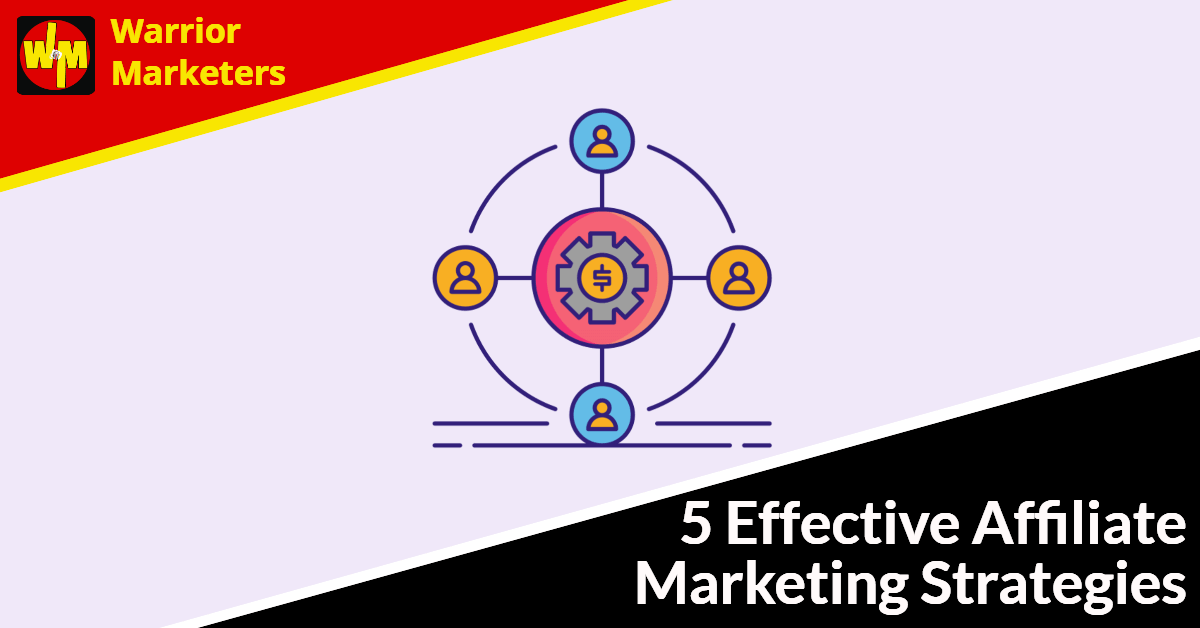
There are a plethora of affiliate marketing strategies and tactics employed by many successful affiliate marketers to ramp up their sales and commissions.
While some strategies may seem advanced, they are all usually based on the fundamentals of affiliate marketing.
As an affiliate marketer your job is to be a ‘conduit’ that takes an interested visitor to the sales page which will go on to sell the product.
That’s really all there is to it. All other intricacies can be boiled down to this goal. Let’s look at a few highly effective strategies employed by thousands of affiliate marketers all over the world.
Niche Sites

This is without a doubt the most popular strategy. To promote a variety of products you need a niche site. The content that’s interspersed with your affiliate links will make you sales if you do it right.
As long as you grow your site, your earnings will increase exponentially. Some of the large authority sites make 5 to 6 figures a month in affiliate commissions. That’s how powerful this method is.
Facebook Groups/Pinterest Boards

Everyone is on social media these days. Having Facebook groups and Pinterest boards dedicated to your niche, will allow you to tap into existing hotbeds of traffic while targeting and audience that is interested in your niche.
That’s fine too. What matters is that you hang out where your audience hangs out.
YouTube Channels

If you’re shy to be on camera, you can still do unboxing videos or PowerPoint presentations with a voiceover. YouTube is an excellent source of free traffic.
Links in your video descriptions can either go to a landing page or your website. While some affiliates prefer to directly link to the product, it’s wiser to try and capture the lead.
BTW, for an excellent course on video marketing, I highly recommend Video Marketing Insider
Email Lists

As mentioned earlier, always strive to build your list. Have a pop up on your site with a freebie that encourages the visitor to opt in.
Once you have a list and you build a relationship with them, you can promote products that will be well-received. A list will be your greatest asset.
Paid Ads
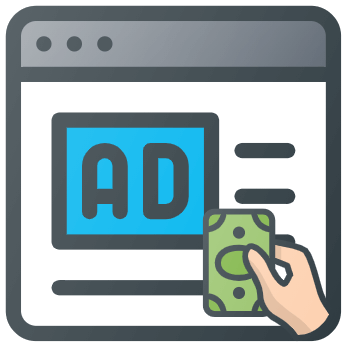
Many marketers stay away from paid advertising because it’s almost inevitable that you lose money during the testing phase. However, you should give it a try when your budget allows for it. You’re not losing money – you’re buying data.
Give these 5 strategies a try and watch your affiliate commissions soar. They will take you some time to do, but if you’re consistent and stick to the plan, your future self will thank you for it. These strategies will work wonders for your affiliate marketing.
Of course, a major part of affiliate marketing is knowing which products to promote, so how do you decide which to promote and which to leave aside?
What Should You Look For When Choosing Products To Promote?

As an affiliate marketer, when you choose a niche to market in, ideally it should have a wide variety of products to promote. There should be a mix of tangible and digital products to cater to a wide variety of customers within the same niche.
So, it’s important to put right product in front of the right person at the right time to get maximum sales. Below you will find a few tips to guide you.
Does It Fit Your Niche?

This is a very important point. You need to know what your audience is looking for. If you’re in the golf niche, promoting bodybuilding supplements such as mass gainers might be a flop. However, an eBook about improving one’s shoulder strength may be a hit for people hoping to improve their golf swing.
However, that same guide will not be as eagerly bought by women looking to lose weight with an easier program like yoga.
As you can see, even though the problem is the same, the products that’ll interest your audience will be different. So, you must really understand your niche and expect a period of testing.
Vendor

Another factor that you should look at is the vendor. If you’re promoting products on Amazon, you don’t have to worry too much.
Everybody trusts Amazon and they do a great job at selling.
Always check the vendor’s credibility.
Sales Page
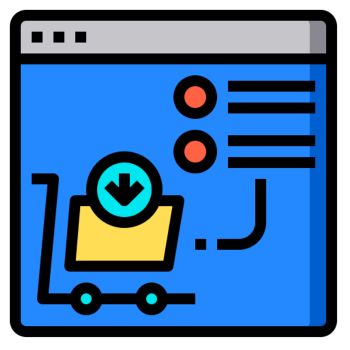
Is the sales copy for the product convincing?
Is the description accurate and convincing? Read the sales copy and ask yourself if you’d buy the item. If you would, your site visitor or subscriber might probably buy it too.
Does It Solve A Problem?

Products that solve problems will always sell better than those that are just for satisfying wants.
You need to supply people with what they want, not necessarily what they need. This is just the way of business and marketing; hopefully they will eventually find what they need through you.
Reviews

Look at the testimonials and customer reviews on the site. Amazon makes this easy by providing ratings and reviews from verified customers. Promote products with a high rating and many positive reviews.
The same applies to digital products. You may even wish to ask the vendor to email you a review copy.
Many vendors will gladly accede to your request. If they don’t, just move on and find another product.
Trends

Last but not least, check on Google Trends to see if the product is in demand. Sometimes, products are very popular because of a craze, but then it all suddenly dies down.
These are the pointers to look out for when choosing products to promote. Exercise due diligence in your research and only recommend proven and profitable products to your audience. This will ensure that they trust you and your reputation remains intact.
If you want to know more about affiliate marketing then check out the featured resource below for a free report; download it read it and take action 🙂

Affiliate Marketing 101: Know Your Audience
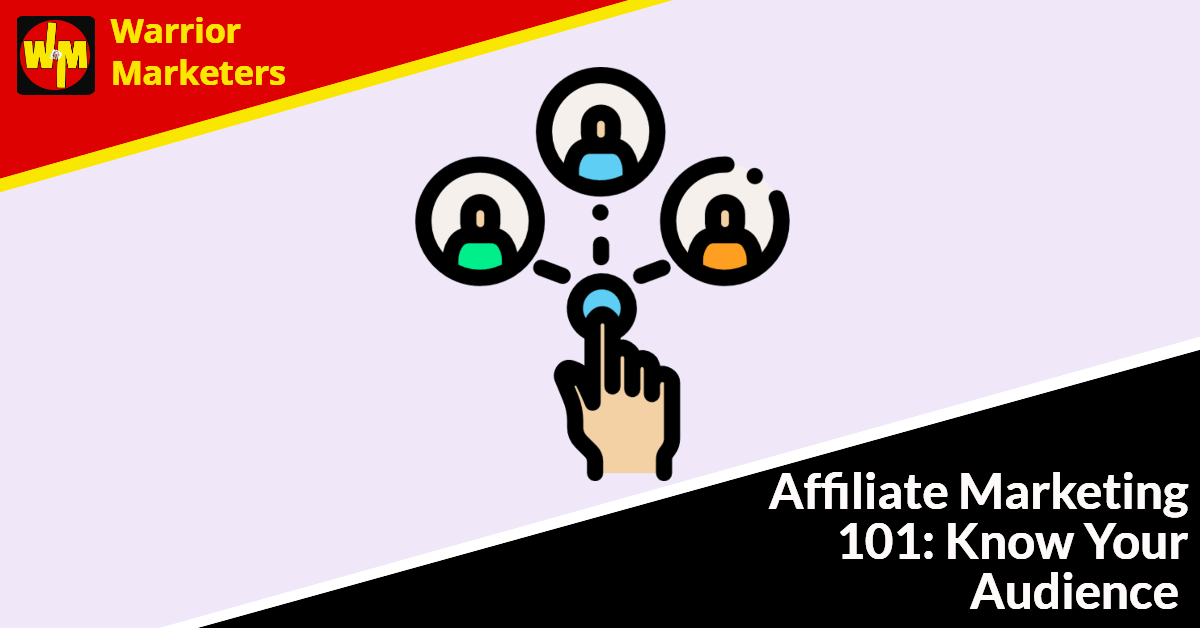
One of the secrets to successful affiliate marketing is knowing your audience so well that you can instinctively predict what products they’ll like and what they’ll avoid. To get to this stage, will require some effort and research on your part.
Follow the pointers below and you will be better prepared.
Do You Have A Customer Avatar?
![]()
When targeting a niche, whom will you be speaking to? If you’re targeting the women’s weight loss niche, how old will your reader be? Is she a mother or single? How much time do you think she’ll have a day to exercise? Is she a career woman or a stay-at-home mom?
Generally, she’ll be trying to lose weight with gentler exercise programs like Pilates or Yoga. So, you can leave out hardcore interval training programs and focus more on promoting yoga DVDs, yoga mats, etc.
While some questions will overlap and you don’t need to get too specific, you must have a general idea of whom you’re speaking to. This will enable you to tailor your message accordingly.
Where Do They Hang Out?

Finding your target audience will be your next task.
You can then target these areas with your marketing.
Over and above that, knowing where your audience hangs out will be helpful when it comes to traffic generation later on.
What Are Their Problems?

The forums, Facebook groups and other places where your audience congregates will often have questions and problems being mentioned by those in need of help. This is a goldmine of information.
Very often, during your research you’ll see similar products being mentioned that have helped people with their issues, and some other products will not be looked upon favorably.
Take notes here and promote the popular products and avoid the stinkers.
Are There Any Other Issues That They May Have?
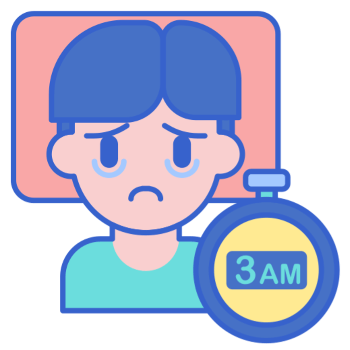
Some niches can be related without you even realizing it. For example, the man who wishes to lose weight and get ripped, may also be doing it to attract more women. He’ll probably also be interested in guides that show him how to pick up women, etc.
This is actually a very popular industry online with tons of sales. You may wish to experiment and try promoting a pickup artist guide and see how that works for you. If it’s well-received, you know that you can start planning to market it more frequently. If it falls flat, you can ditch it and move on.
But it doesn’t end there! In affiliate marketing there are many skills you need to master to be effective and once you have found and know your audience, you will need to try to sell them on your affiliate offers but you need to be careful and not turn them away and this is where subtlety comes in…
How to Be Subtle In Affiliate Marketing

There’s a marketing saying that goes, “People hate being sold to, but they love to buy.”
This maxim pretty much hits the nail on the head. Many marketers fail to realize that you say more when you say less. When a blog post hypes up a product or you send an email that praises a product in a way that’s over the top, you actually repel potential buyers.
Your motives become suspect and you lose credibility and trust. Once those go, getting the sale can be very difficult. That’s exactly why you must be subtle in your marketing.
One of the best ways to do that will be to show how the product helped you and how you benefitted from it. While it may not be possible to do this for all the products you’re promoting, you can still be subtle in other ways.
For example, if you have a site showing how to build chicken coops, casually mentioning that ‘circular saws are much better than miter saws because they’re easy to use’ will get you more sales. You just need to hyperlink the words circular saws to the product you’re promoting.
Curious visitors will click on the link. After all, everyone wants to make things faster and easier for themselves.
However, if you say, ‘you need to buy a circular saw model XXX to do this job effectively. It is the best saw that we found for the job and only costs $YYY’, you’ve probably set off the reader’s Spidey senses. They can sense that you’re pushing the saw on to them because you were too obvious.
As an affiliate, your job is to get the click. The sales page should do the selling. While your content can gently pre-sell the reader, it should mostly be ‘benefits oriented’. You want to sell the solution to the problem and not the product. The best way to do this is by showing how the product solves the most common problems that your audience faces.
You’ll not even need to mention where the product is sold or the positive reviews it has. If your content convinces the reader that the product is the solution that they’ve been looking for – without blatantly telling them, the reader WILL click on the links to see how they can solve their problems.
Everybody is looking for solutions. You’re just the middleman who gently guides them down the right path. That’s all there is to it. Be subtle.
If you want to know more about affiliate marketing then check out the featured resource below for a free report; download it read it and take action 🙂

2 Questions You Need To Answer As An Affiliate Marketer
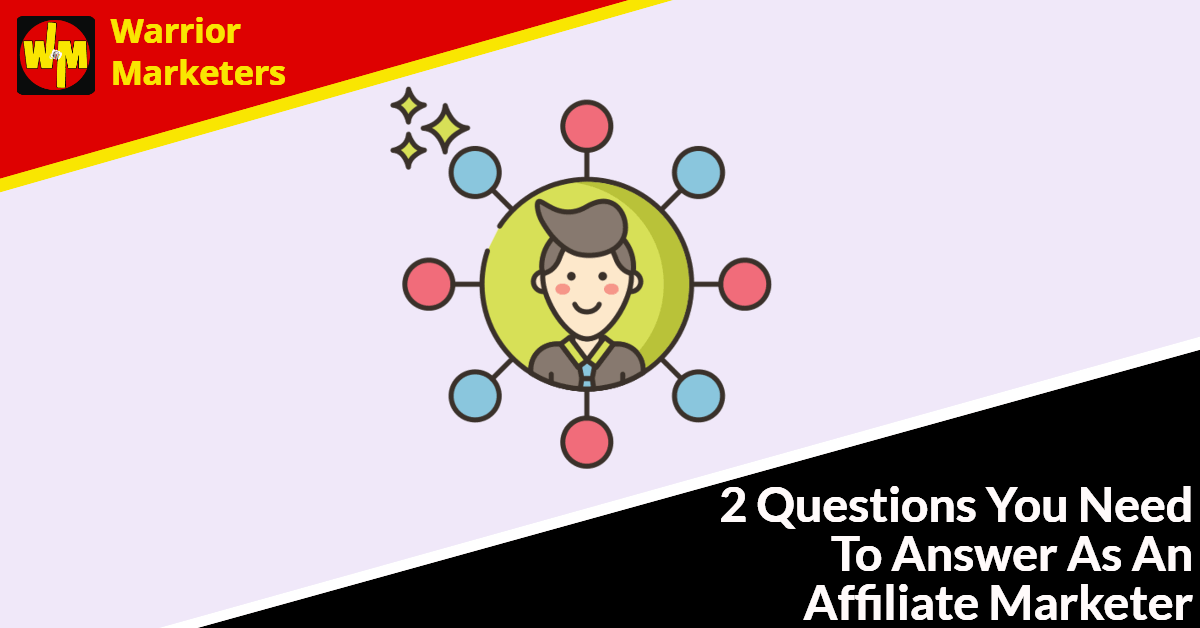
As you are reading this post, you must already realise that affiliate marketing is a great way to start an online business quickly.
But it isn’t always as straightforward as it seems and you may have some questions such as “Do I need to build an email list as an affiliate marketer?” or Do I need my own website to do affiliate marketing?”
In this article we are going to take a look at these two important questions.
Firstly, we’ll take a look at whether you do need to build your own email list when affiliate marketing and then we’ll look at whether you really do need your own website to really succeed as an affiliate marketer.
Ready? Let’s get started…
Do Affiliate Marketers Need To Build A List?

When embarking on an affiliate marketing career, you’ll need to determine if you want to build a list of emails from customers. Whether or not to build a list depends on the type of affiliate marketing you plan to pursue.
Building a list works well for products in specific niches. For example, the weight loss, health, and parenting niches offer opportunities for you to promote multiple products over a period of time. You’ll find a wide variety of products that fit different needs of your customer base.
When you have a list, you can capture the names and email addresses of potential customers so that when a new product is available, you can share it quickly and easily. You’ll need a program specifically designed for email marketing – such as Active Campaign or Aweber.
Using Active Campaign or Aweber, you can create sign up forms that you can add to your blog and squeeze page where people can enter their name and email address. You can also add special categories to help you get to know your customer better, such as the top weight loss problem or parenting concern they have.
Once you’ve captured emails, you can use the program to send different types of messages. Broadcast messages are often used to announce specials or just generally communicate with your list. They’re sent one time to the current subscribers.
Building a list doesn’t happen instantly – it’s another area in affiliate marketing where you will grow over time. You’ll start with no one on your list and gradually begin to see it increase. The larger your list, the more people you can reach to promote products.
It’s important to treat your list with care and respect so that people will want to hear what you have to share with them. You’ll want to make sure not to share any of the information you gather or submit your list to constant spam type messages.
Another question you may have is about having your own website as an affiliate marketer; is it required?
Well, let’s take a look at that now 😊
Do You Need A Website To Be An Affiliate Marketer?

As an affiliate marketer, you may wonder if you need to have your own website in order to succeed in the business. While it’s certainly a good idea to have your own website, there are many options that don’t require you to do that.
For example, you can use third party platforms that allow you to promote products. Examples include HubPages and InfoBarrel. These sites are relatively easy to use and can help you make a profit in affiliate marketing. You can write articles with affiliate links in them and you can generate income from the links and from the articles themselves as these sites operate a revenue share scheme. You can also do a similar thing with Medium too.
You can also get hosting for a free blog. For example, BlogSpot allows you to create a free blog where you can promote products. The one thing you need to be aware of, though, before you use third party platforms – is that you’re subject to their rules.
At any time, the rules may change and your blog might disappear or your pages may become obsolete. You just don’t have much control over your business when you choose these options. In fact, you can have the business you’ve worked hard to build that gets deleted in an instant.
If you are looking to buy a domain name Namecheap is a great place to look and if you are looking for hosting you won’t go wrong with either A2 or Siteground.
It’s very simple to set up a blog on your own site and you don’t have to worry about conforming to anyone else’s rules about what can and can’t be done on it. Then you can use third party platforms as a support mechanism and even to drive traffic to your blog.
You’ll find that it doesn’t cost as much as you might think to have your own site in your chosen niche and truly be the master of your own affiliate marketing business. This small investment (of about $10 a year for a domain and less than $10 a month in hosting) can bring big payoffs and is worth your efforts.
As an affiliate marketer, you don’t have to have your own website. But depending on third party platforms alone can be a risky decision. The best option is to have your own website and take advantage of third party platforms to supplement what you’re doing on your own site.
This way you get the best of both worlds and have multiple streams of income to support your affiliate marketing career.
If you want to know more about affiliate marketing then check out the featured resource below for a free report; download it read it and take action 🙂

Discover Why Content Will Make Or Break Your Affiliate Marketing

Affiliate marketing and content marketing are joined at the hip. If you want to be a good affiliate marketer, you need to put out good content. There’s no other way around that.
Even if you’re using paid advertising, you’ll be trying to get people on your email list. The emails that you send are content. There may be links to your blogs, reviews, etc.
The crux of the matter is that most people online come looking for either information or entertainment. Only a small percentage are ready to buy. This applies to anything from booking hotel rooms in a foreign country to buying a gun safe.
If you have a website that shows up when they search for the hotel reviews and you mention how the proximity of the hotel to the local watering holes is a plus point, or you show all the different activities they can engage in that’s just a stone’s throw away from the hotel – the visitor will read the content on your site eagerly because it pertains to them.
In most cases, they’ll click on your affiliate links and book the rooms. Now you’d have made an affiliate commission by providing content that the visitor was looking for. That’s how it works.
There are 5 pointers to note when creating content. Failure to adhere to the tips below will mean that your content marketing falls flat, and you’ll not see much affiliate sales.
Must Be Relevant

Your content must be relevant to the products you’re promoting. If you’re promoting an outdoor grill, you may wish to have content on what to look out for when purchasing grills.
Or how to clean grills… or even easy grilling techniques to prevent a mess. Whatever the content may be, it must be relevant.
What do they need help with? Write an article helping them and then link to the appropriate affiliate product you are promoting.
By targeting longtail keywords, you know that whoever comes to your content is a red-hot lead. Yes, the amount of traffic you will get will be less but it is highly targeted and much more likely to buy something you recommend if your content is informative and helpful.
Must Be Interesting

Your content must be interesting enough to hook the readers by the eyeballs and keep them reading to the last word. If your content is vapid and dull, the reader will yawn and click off the page. There goes your sale.
And, don’t be too formal and stuffy unless your niche expects that. Most niches don’t and readers will appreciate you trying to make the content interesting as well as useful.
Must Be Engaging

Facebook posts on your fan page are content too. So are the videos on your YouTube channel. But here’s what makes them so powerful – the engagement in the comments section.
Look at the comments and engage with your audience. The more you get to know them and respond to them, the more they’ll like and trust you. Engagement counts too.
Ask questions that encourage people to comment. Believe me, people are much more likely to comment if you simply ask them to.
You ultimately want to attract the people that “get” you and repel those that don’t.
This way you will be much more likely to see visitors to your blog content click through your links as they like what you have to say and trust you and your recommendations; just don’t let them down!
Must Be New

Your content needs to be new. You’ll have to keep publishing content to stay up-to-date.
There’s no point in having a hotel review on your website that’s 8 years old when the hotel has already been torn down to make way for a shopping mall.
Always have a content publishing strategy and stay relevant with the times.
You can either update existing content which means you won’t lose any of the SEO juice for that particular post, or you can write a completely new post; both options have pros and cons so choose which way you want to go and do it.
Must Be Reliable

Whatever content you publish must be reliable too. The term ‘fake news’ is being tossed about everywhere these days. You want content that is trustworthy.
Readers can sense hype and drivel. So, make your content useful and it will help to sell your affiliate products too.
If you are teaching strategies and/or tactics, make sure that you know what you are talking about. It is a good idea to always practice what you preach because at least you know what you are talking about works.
Stick to the 5 content creation and marketing tips above and you should see your content work better for you and increase clicks and ultimately, sales.
Many marketers are so focused on sales, traffic, and conversions that they neglect the content… which can make or break them. Don’t make this mistake.
“Content builds relationships. Relationships are built on trust. Trust drives revenue.” – Andrew Davis, Author
If you want to know more about affiliate marketing then check out the featured resource below for a free report; download it read it and take action 🙂

How To Make Affiliate Sales With No Website Or Money!

Every single day, droves of people get on the internet hoping to make money online. Very often, they have a plethora of reasons for wanting to do so – ranging from wanting to quit their day job to having more money for the finer things in life.
One common thread that binds most of them is that they’re often on a tight budget… and is also probably the reason why they want to get into online marketing to boost their income.
However, they’re often told that they’ll need to purchase their own domain, pay for hosting, fork out more cash for autoresponder fees and so on. It’s almost as if they need money to make money.
While motivational gurus may spout motherhood statements such as, “It’s not about your resources, but your resourcefulness…”, the truth of the matter is that you can’t multiply by zero.
You’ll need money to pay for different fixed and recurring costs in your business. That’s a given.
However, if you’re financially strapped and can’t possibly get a second job because your first one is almost working you into an early grave, there are a couple of ways you can make affiliate marketing work, for free.
You Need A Free Website

There are several platforms that will allow you to have a free website. The catch here is that you’ll have no control over the advertising that appears on your site.
If they feel like you’ve flouted their rules, they could boot you out unceremoniously without giving you any notice.
Countless beginner marketers have lost their businesses overnight by ‘building their houses on rented land’.
So, your goal is to build a free website and once you’re generating sales, you should immediately buy your own domain and hosting so that you’re in control of your business.
Here are 2 free platforms you can use:
WordPress.com – https://wordpress.com/
*Medium – https://medium.com/
*While Medium doesn’t allow you to build your own site, it allows you to post articles on their platform. That’s really all you need for now.
The site gets a lot of traffic and has potential when it comes to ranking for low hanging keywords that you may wish to target. From there, it’s just a matter of publishing more targeted articles and getting affiliate sales.
Getting Your Affiliate Links

It should be free to join most affiliate programs on places like ClickBank, Amazon Associates, CJ Affiliate, ShareASale, Rakuten Marketing and so on. Go ahead and sign up and get your links.
There are tons of excellent affiliate products that you can promote for free without having to jump through hoops.
Free Traffic

Since money is tight, paid ads are definitely not an option here. The next best way to generate traffic to your pages will be to siphon it from high traffic social media sites and platforms such as YouTube, Facebook, Twitter, Instagram and Google.
If your content is valuable and top-notch, you’ll build a following and have people clicking on your affiliate links or article links. So, go ahead and create accounts in the different social media platforms and…
- Start making videos with your mobile phone and post them on YouTube
- Set up a Facebook group and a fan page and start posting content
- Write articles on your niche and post them on Medium
- Start tweeting your articles/videos/etc.
- Use Canva.com to come up with attractive creatives you can use. (It’s free!)
Once again, it’s important to remember that social media sites are not your web properties, so you’re never totally safe with them. The goal is to always generate sales until you have enough money to build your own website and list. These are YOUR assets.
Putting It All Together

One way to start will be to write and start posting useful articles on Medium (you’ll embed your affiliate links in the posts). Just remember to disclose affiliate links and DO NOT overdo it. Moderation is key here.
Point your YouTube videos, Facebook posts, tweets, etc. to your Medium article so that you can pre-sell the reader by providing more information and value. Once you build trust with your audience, your chances of getting the sale will be much higher.
Your Medium account with all your content will act as a hub-site for your affiliate marketing business. The free traffic methods you employ will siphon traffic from different platforms and point them all to your hub site’s content… just like how all roads lead to Rome.
Then it’s just a matter of time for the traffic to convert into sales (if your content is valuable and persuasive).
What Next?

Keep on keeping on until you start seeing sales trickle in. Give yourself 6 to 12 months to see your efforts yield fruit. This is a slow process, but a rewarding one.
Being able to build your own mailing list will help to elevate your marketing to the next level and skyrocket your commissions.
This is the best way to bootstrap your way from scratch to affiliate marketing success.
“Every artist was first an amateur.” – Ralph Waldo Emerson
Once you have started to make progress you should consider taking the next step and investing in your business to take your affiliate marketing to the next level. If you want to know more about this then check out the featured resource below for a free report; download it and take action 🙂





